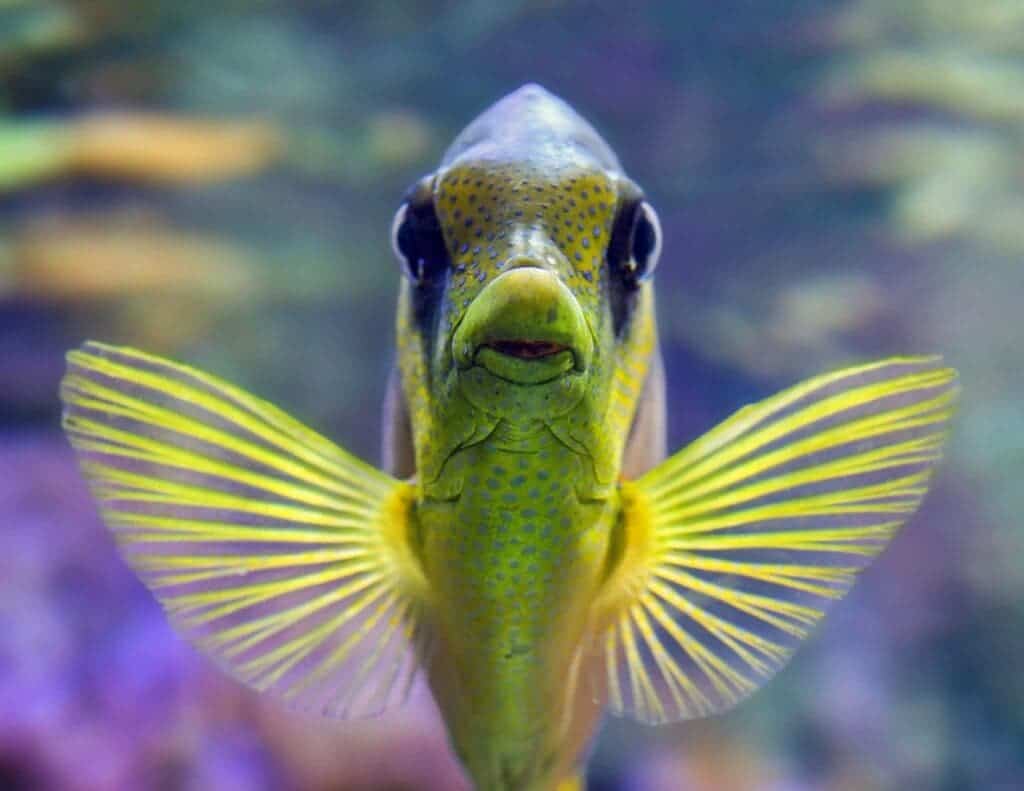Fish in the Australian Great Barrier Reef seem to be losing their colors in response to coral bleaching, according to a new paper.

Weeks after the Great Barrier Reef was struck by yet another mass bleaching event, a study comes to report on a new and unexpected consequence of man-made climate change. The study explains that brightly-colored fish communities that inhabit the reefs around Orpheus Island, located in the mid-section of the reef, are becoming increasingly rare. This process likely is taking place as bright colors — which the fish use for camouflage — no longer help the animals blend in with their now-gray surroundings.
Bleached fish
“Future reefs may not be the colorful ecosystems we recognize today,” ecologist Chris Hemingson and his colleagues write in the new study.”Our findings suggest that reefs may be at a critical transition point and might be poised to become much less colorful in the coming years.”
The make-up of corals in the Great Barrier Reef has been heavily affected by previous, repeated bleaching events. Soft and branching corals have especially suffered, and the authors note that their decline is a likely factor in the disappearance of brightly-colored fish.
For the study, the team looked at the diversity of colors shown by communities of reef fishes, and compared that to the types of habitats where those fish live. Whether individual species evolved bright colors for reproductive purposes (i.e. to attract a mate) or for protection (to blend in and avoid predators), their coloration is naturally linked to the coral reefs they inhabit, the team explains.
Then, the researchers compared communities that live in healthy areas of reefs, where corals are plentiful, to areas that have experienced significant upheaval during the last few years. These latter areas are dominated by massive, encrusted corals leftover from disturbances such as cyclones or heatwaves, and represent highly-degraded reefs with few, algae-covered corals.
“We found that as the cover of structurally complex corals increases on a reef, so does the diversity and range of colors present on fishes living in and around them,” says Hemingson. “But, as the cover of turf algae and dead coral rubble increases, the diversity of colors declines to a more generalized, uniform appearance.”
Afterward, the team looked at data pertaining to the fish communities inhabiting reefs around Orpheus Island collected annually over the last 27 years, to see whether the trend they identified held true over time.
Only 2% of the Great Barrier Reef remains untouched by coral bleaching. Five mass bleaching events took place over the last 30 years as man-made emissions heat up the climate and, in turn, the oceans. The first recorded mass bleaching event, in 1998, hit the area around Orpheus Island especially hard. Branching corals took a very heavy hit, and the event led to a “complete shift” in fish communities, Hemingson and colleagues found. Although massive and encrusting boulder corals have replaced branching ones — the former being more resilient to heat impacts, so this shift likely strengthens the reef’s ability to resist further heat waves — they provide much less protection for brightly-colored fishes on account of their duller coloring.
“Unfortunately, this means that the corals that are most capable of surviving the immediate impacts of climate change are unlikely to maintain the diversity of colors currently supported by coral reefs,” the researchers write. “Fish communities on future reefs are therefore likely to be a duller version of their previous configurations, even if coral cover remains high.”
“Ongoing declines (exacerbated by further disturbance events) are likely to lead to a complete loss of these brightly colored species”.
In the three decades since, yellow and green fishes — such as the lemon damselfish and green coral goby — have experienced the most significant declines, by around two-thirds of their pre-1998 populations.
Hopefully, the findings motivate us all into finding solutions to better protect the world’s coral reefs — and the bright, colorful species they harbor.
The paper “Are fish communities on coral reefs becoming less colorful?” has been published in the journal Global Change Biology.


